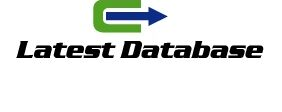Have you ever had the perfect roadmap for a product, only to see it fall apart in the face of unexpected market changes or shifting customer demands?
It’s a challenge that many face. More than 60% of product strategies fail because traditional roadmaps struggle to meet these challenges.
That’s where agile roadmaps come in. Unlike static plans, an agile workflow plan adapts in real time, allowing teams to pivot quickly without losing sight of their long-term vision.
Let’s discover how you can create an agile roadmap that helps you stay competitive and deliver consistent customer value.
What is an Agile Roadmap?
**An agile roadmap is a flexible, high-level plan that outlines the vision, direction, and goals of a product, while allowing for adaptability throughout the development process.
Unlike traditional roadmaps, an agile roadmap doesn’t adhere to a strict timeline or set of deliverables. As a team gathers requirements in agile environments and learns from ongoing sprints, your agile roadmap evolves.
Here’s how agile development helps teams focus on their priorities while responding to philippines phone number data market changes, customer feedback, and shifting business goals.
Fun fact: The Agile Roadmap is based on the Agile Manifesto created by a group of software developers during a ski trip in 2001
An agile roadmap is essential for teams that want to remain competitive and responsive. By using one, you can:
Adapt to evolving customer demands and market trends
Maintain focus on long-term goals while what is endpoint security software? allowing flexibility in execution
Foster team understanding and collaboration across sprints and iterations
Prioritize continuous delivery of value instead of adhering to rigid deadlines
Support decision making by providing clear insight, even when specific aero leads details change over time
Agile Roadmap vs Traditional Roadmap
Both agile and traditional roadmaps guide product development, but their approaches differ. Here are the key differences:
Flexibility: Agile roadmaps are dynamic and can be adjusted based on feedback or changes in the market. Traditional roadmaps tend to follow a fixed plan
Timelines: Agile roadmaps focus on short-term iterative cycles that allow for adjustments. Traditional roadmaps are often tied to long-term timelines.
Customer Focus: Agile roadmaps prioritize customer feedback and iterative improvements. Traditional roadmaps focus more on assembling predefined deliverables, sometimes at the expense of customer needs.
Risk Management: Agile roadmaps enable teams to identify and address risks earlier by continually updating the plan. Traditional roadmaps can delay risk identification until later, making it difficult to reorient.

